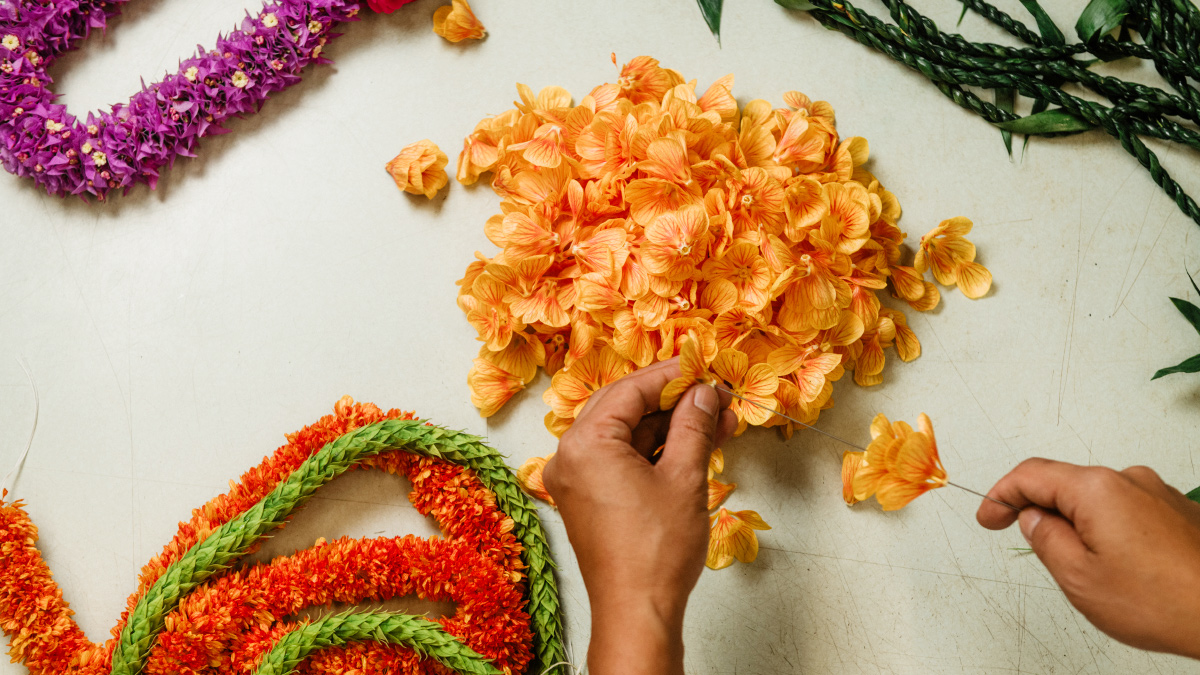A Waipahu lei maker draws inspiration from the past to craft lovely strands of lei.
On a recent Sunday morning, lei craftsman Dale Acoba arrives at a friend’s birthday party carrying lau hala baskets overflowing with flowers—creamy-hued plumeria, bright purple and green orchids, orange kou, and magenta bougainvillea. On a table, he carefully lays out long lei needles and string. Acoba says a few words on patterning and stringing the blooms, and the friends thread their needles and talk story while partaking in the beloved tradition of making lei.
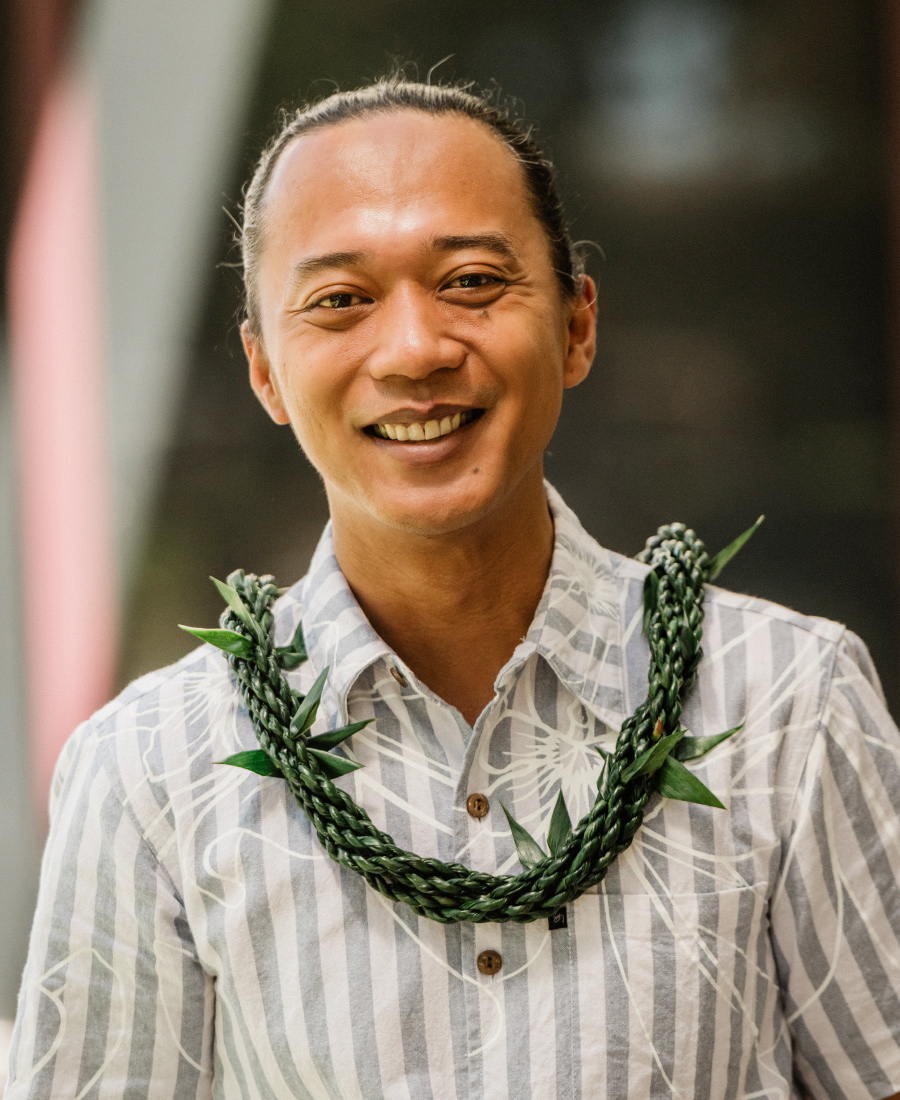
For Acoba, who moved from the Philippines to O‘ahu in 2006, lei making is both an artistic outlet and a connection to Hawaiian culture. When work at Su-V Expressions, a Honolulu florist, slowed due to the pandemic, he turned to lei making. “I had to figure out a way to stay creative,” Acoba says. What began as gifts for friends quickly blossomed. Drawn to his distinctive style, more and more people began requesting lei.
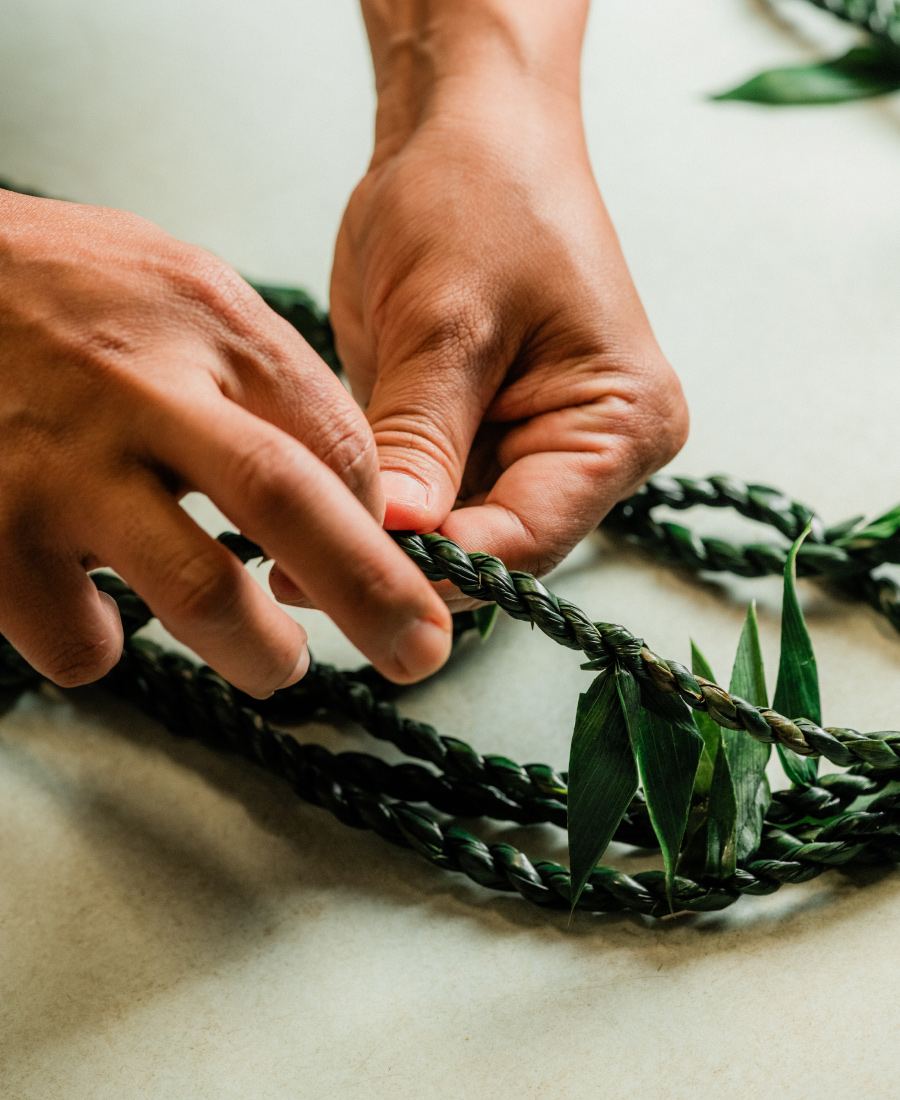
Acoba’s approach to lei making strikes a balance between honoring tradition and embracing innovation. While he always returns to the classic lei as a way of paying tribute to the past, Acoba also seeks out unconventional materials to work with. A small collection of books, including Marie McDonald’s 1985 book Ka Lei: The Leis of Hawaiʻi, provides guidance, inspiration, and reassurance. Through them, Acoba realized the lei makers of old were perhaps as inventive as he is today. “It’s validating because I feel like they thought the same way I do,” he says. “They were just being creative and experimenting with what they had.”
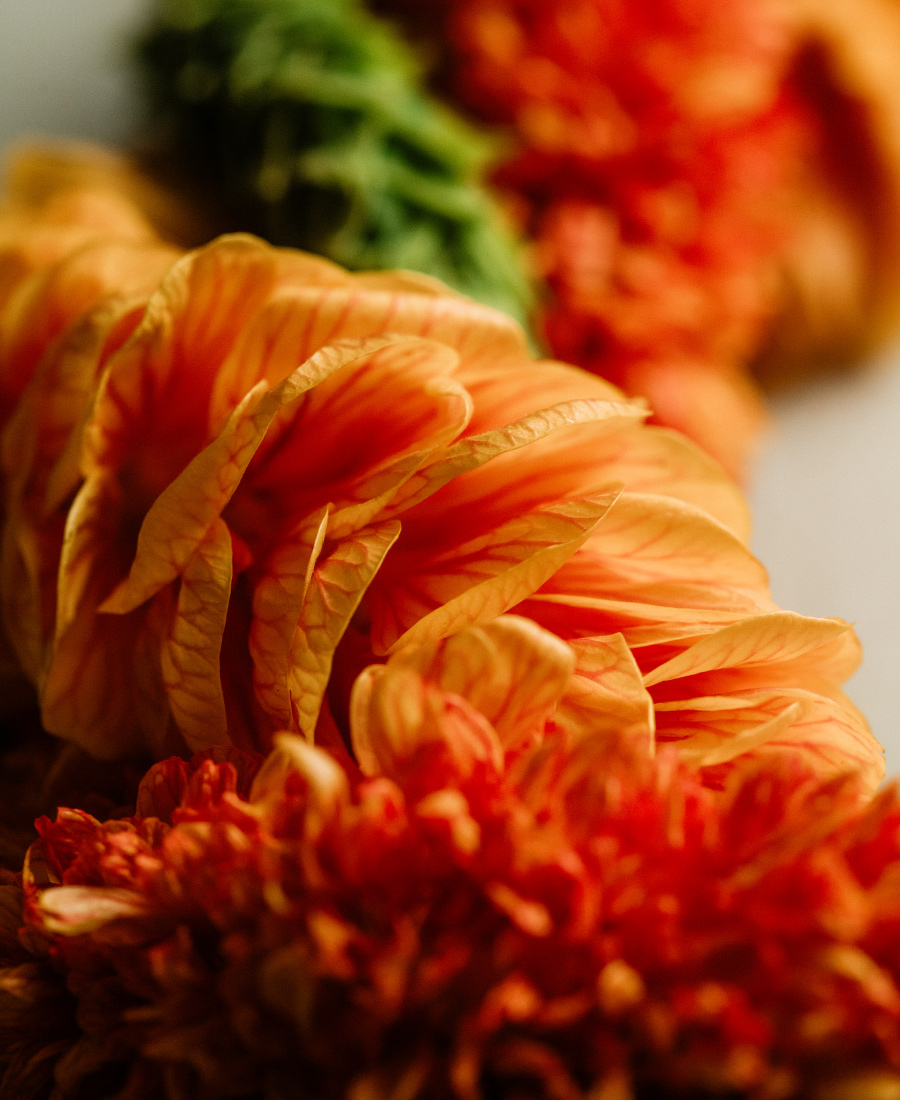
Though Acoba favors certain materials— fragrant blooms such as pīkake, pua kenikeni, pakalana, and ‘ilima—he looks for alternatives when those flowers are out of season. When he first encountered pearl yarrow, which he describes as “giant baby’s breath,” he saw the potential to deconstruct its blooms, string them into lei, and twist them with pīkake strands, blending the two seamlessly. Although he would love to work exclusively with classic lei flowers, Acoba recognizes the challenge of sourcing them, as fewer people are planting them nowadays. Still, he continues to turn to his archives for inspiration. “I look at pictures of historic lei and try to see if there’s any way of recreating them with the materials that are available right now,” he says. His use of unconventional flora has its appeal: Not only are the blooms beautiful, but Acoba also enjoys introducing people to them through his lei.
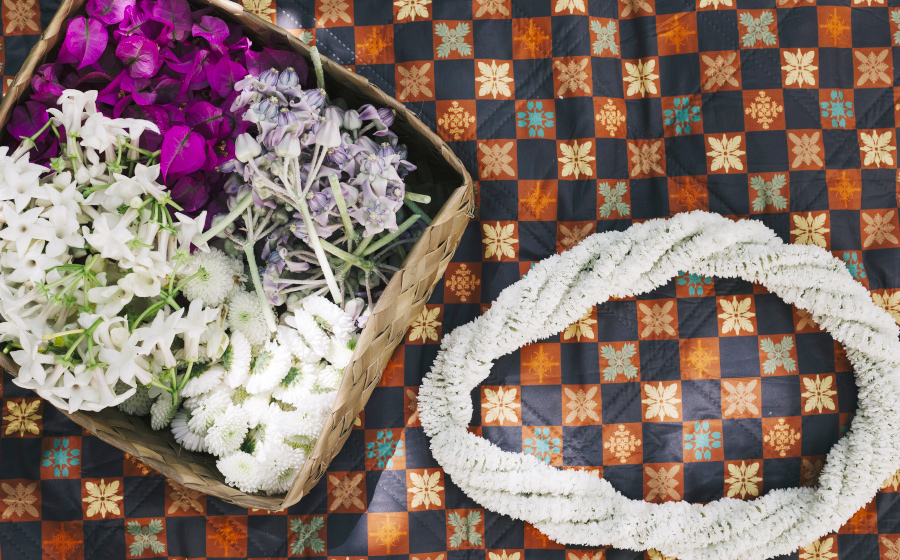
Today, Acoba sources the majority of his lei materials locally, growing many plants himself and regularly visiting friends with flowering trees in their yards.
His creativity was shaped by his Filipino upbringing. “I didn’t grow up with much, and that made me resourceful,” Acoba explains. “I always look to nature to see what is there,” he says. At the birthday party, he points to a lei po‘o (lei worn on the head) embellished with fuchsia accents— tiny blooms plucked from a creeper vine he noticed the night before in a friend’s yard, exclaiming, “They are flowering right now, so you’ll see them everywhere in Honolulu!”
Follow lei craftsman Dale Acoba on Instagram @37vp to see his collection and latest floral works.
